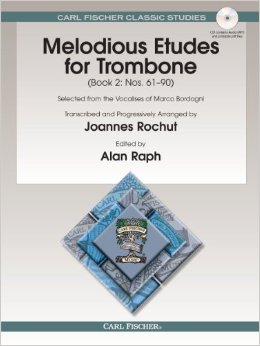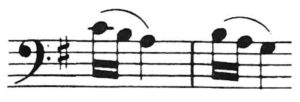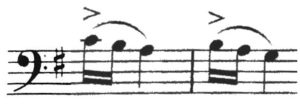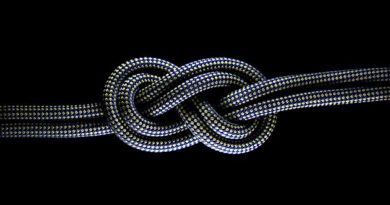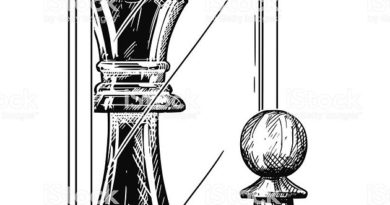The New Bordogni – An Interview With Alan Raph
Editor’s Note: This is a guest post by Ross Holcombe, Assistant Principal Trombone of the Florida Orchestra. Below you will find an extensive interview Ross had with Alan Raph, the legendary trombonist, about his edition of the Bordogni Melodious Etudes.
Updated: March 10, 2020
Starting in 2012, students and professionals looking to buy a copy of the “Rochut Book” were surprised to find the iconic Carl Fisher edition with red and blue trombones on the cover replaced by a new product. This staple of the trombonist’s practice diet was now offered in a new edition. Printed under the familiar names of composer Marco Bordogni and arranger Johannes Rochut was now the name of the first new editor in almost a hundred years: Alan Raph.
The choice of Alan Raph as editor of the new edition seems to have been a sound one. An esteemed performer and teacher in a wide array of styles, Alan Raph has performed with diverse ensembles such as the American Symphony Orchestra under the direction of Leopold Stokowski and the Gerry Mulligan Jazz Band. He has also recorded numerous LPs and CDs with artists as diverse as Quincy Jones, Philip Glass, the NBC Opera, Eugene Ormandy, the Bolshoi Theater Ballet Company, and Diana Ross. He currently teaches at the Teachers College of Columbia University and Queens College of the City University of New York.
As a trombone teacher myself, I was surprised when my students first started coming to lessons with a different edition of the Bordogni etudes than I had grown up with. Like many, my first reaction was one of indignation at the fact that anyone would dare to alter this unimpeachable staple of our repertoire! As my students moved through the book week by week I would stumble upon changes and alterations as compared to the previous Rochut edition. Some seemed to be small changes, such as a grace note omitted, a dynamic added, or a slur extended. Some changes seemed to be major, such as changed notes, new layouts, or even entire measures or phrases added.
While I was able to make sense of some of the changes on my own, others continued to mystify me. Rather than continue to wonder about what decisions went into preparing this new edition, I decided to contact Alan Raph myself to find out the answers to questions that trombone teachers everywhere have been wondering about.
What follows is a transcription of my interview with Mr. Raph, who was kind enough to talk to me on the phone for more than an hour to discuss details of his new edition of the Bordogni etudes. If you are among those who question the changes to our beloved Melodious Etudes, I hope that the transcription here will leave you with a greater understanding of exactly what it takes to prepare a new edition of (arguably) the most important collection of music in any trombonist’s library.
Without putting too much of my own spin on it, I will say that most of my concerns were allayed by talking with Mr. Raph. This new edition was prepared with reference to the original Bordogni vocalises, correcting errors and omissions by Rochut along the way. Alan Raph’s edition of the Bordogni vocalises brings them into the 21st century while still paying appropriate homage to Rochut, who introduced these important pieces into our repertoire almost a hundred years ago.
Additionally, I’d like to thank Savanna Jenkins, a student of mine at Whitworth University, for her assistance in preparing the musical examples for this interview.
–
Ross Holcombe: Before we specifically talk about your new edition of the Bordogni etudes, I wanted to ask what you like about them, why do you think they are important, and what you do think students and professionals should try to get out of them when they practice?
Alan Raph: They’re the best vocalises I’ve ever heard. They give you a wonderful sense of legato phrasing. Of the many vocalise collections out there, I think Bordogni is the absolute top of the heap.
RH: How do you think they became so ubiquitous? Who really popularized starting to use them somewhere back in the trombone pedagogy timeline?
AR: Rochut must have gotten copies of the vocalises and thought they would be nice for trombone, and so he made [the Melodious Etudes book], and he did a really good job. He did 120 of them! So, how did they get popular? Well, by coming out in the book that Carl Fisher published in 1928, and by being used by Emory Remington and other trombone teachers.
RH: Now I have a few questions about an overview of the work that you did to put out this new edition. First thing: could you tell me why do you think the Bordogni needed a new edition? What led you to decide that this was something you wanted to take on, and something that the trombone community needed?
AR: There were many, many misprints and mistakes in the Rochut edition, and this was a chance to clear them up. I was approached by Carl Fisher to do this, and more or less what we had in mind was to make a more presentable book. As I got into it, it turned out there were more gaps to fill. It became a labor of love, and certainly a longer labor than I thought it might be!
RH: How long did you spend working on it before it was published?
AR: About a year I guess.
RH: I read on the back cover that as you were working on these for that year, you looked at the original Bordogni vocal editions, and you looked at the Rochut trombone edition. Could you talk a little bit more about how you used these older editions to inform your new one? And what was your process like in deciding what you’d change and what you’d keep the same?
AR: Well, there were obvious changes: a beat missing here, a dot missing there. I used the original Bordogni vocalises as my guide. I had most of them in Schirmer editions. The original vocalises were in treble clef. Having the original vocalises included the accompaniments. When I used to play the etudes as a student I had certain harmonies in mind, and then when I heard the actual accompaniments, a major chord that I had imagined would often turn out to be a diminished chord, or something like that. So the Schirmer edition of the original vocalises was very important in determining these. The accompaniments often dictated the style and tempo.
Carl Fisher asked me to put [the new edition] out with the accompaniments, and they were going to do accompaniment both in PDF and audio on a CD in the back of the book. So in other words, you can get the written accompaniment to any one of them, or you can get the actual accompaniment played by a pianist on the CD. To do that I had to add back rests. For example, the piano may have had a four measure intro that was not in the Rochut edition, but it is necessary. And if there was something like a piano interlude, which there is occasionally in Bordogni, those rests would have to be accounted for as well, so you can play it with the piano accompaniment. Hearing the accompaniment, seeing the actual vocalise, and comparing it to what Rochut did was really enlightening. Rochut took some shortcuts. He left some things out. There’s one that I remember where there was a sizable omission. I think he left out six measures! [RH: Alan Raph goes into more detail about this etude, Number 15, later in the interview.]
So basically, I used the original Bordogni vocalises. I also used an issue of the International Trombone Journal, Volume 5, from January 1977. I used that because it has “Errata by Glenn Smith for Bordogni/Rochut’s Melodious Etudes for Trombone.” And he has it listed etude by etude, all the corrections that he made. For instance (I’m reading one random etude), Number 2: “The vocalise indicates that long appoggiaturas are intended in measures 18-19. Instead play 2 eighth notes on the third beat of each measure.” This was corrected by removing the slashes from the grace note flags.
Example 1: mm. 18-21 from the original Rochut edition of etude #2.
RH: That’s excellent! So my next question is: how did you get the work from yourself to Carl Fisher? Did you hand-write it? Did you do it in a computer program like Finale or Sibelius? How was the work transferred?
AR: I made corrections in a book in red wherever I could and gave them that book with the corrections in my own hand. And then if there were long corrections –more than indicating a 2 bar rest, or a sharp or flat, for example, like this six bar thing we just talked about a moment ago– I would put a hand-written insert in. I would say: “from here to here should be these additional bars.” And I’d write them out and put the manuscript in there. So I gave them what amounted to an annotated book.
RH: That makes sense. I don’t know if you had anything to do with this, but if you could talk a little about the piano accompaniments. You mentioned that they do have the CD, and I’ve listened to the CD. Were you involved in the recording of that at all?
AR: No, I wasn’t. There were only two things I did with the accompaniments. I corrected a number of accidentals and omissions of dots and rests throughout. I also wrote an accompaniment to one that wasn’t in the Bordogni collections and had no accompaniment. I made up my own piano accompaniment to that one. I put it in, and I indicated on it that it was an original piano accompaniment, not by Bordogni. [RH: the etude to which Mr. Raph refers is Number 73 in Book 2, which was missing its piano part. In addition, Mr. Raph also composed a piano accompaniment to Number 1 in Book 1, found on the CD in the back of his edition.]
RH: I don’t know if you have any insights about this, but as I in my own personal practice have occasionally tried to play along with the CD, sometimes it’s very easy, but sometimes it’s not. Sometimes with the timing, I’d want to hold something a little longer or shorter. I didn’t know how they decided how long to hold fermatas, or when to come in after a cadenza, for example. I don’t know if you can say anything about that.
AR: Well it’s exactly like practicing conducting by conducting a record. You can’t change the record. You have to conduct the way [the conductor] did it originally. So you have to follow your accompanist, which is not the greatest way to do it, but that’s about the only way I can think of with the technology we have these days. Actually I guess if you really wanted to be hard-nosed about it you could throw the whole thing on Audacity and slow down and speed it up manually! But that would take a long time.
RH: Do you know how many copies of your new edition have been sold to date?
AR: Several thousand.
RH: That’s impressive! It sure is an important book. I have all my students play Bordogni, and I’m sure most trombone teachers across the country and world do also.
AR: You cannot get by without an Arban book, and you cannot get by without a Rochut. Go through those two books, and you’re a trombone player! Anything else you do like learning to play jazz, playing high, playing low – that’s all fine. But Bordogni is going to get you into playing music the way Arban gets you into playing the trombone.
RH: So now I’d like to ask you a few specific questions about things I’ve noticed that have been updated in the new edition. What I’d like to find out is when something was changed, did you do it for your own personal preference, did you do it because it was in the original Bordogni and Rochut changed it, or for some other reason? I’m looking for your reasoning behind some of these changes to the Rochut edition. So the first one is Number 2. In the old Rochut edition, all the 8th notes are beamed six to a bar and in your edition they’re in three groups of two. Was that a choice on purpose, or was there a reason the beaming was changed? This kind of change to the beaming happens frequently throughout the book.
![]()
 Examples 2-3: At top, Rochut’s edition of etude #2, mm. 34-35. At bottom, Raph’s edition of the same.
Examples 2-3: At top, Rochut’s edition of etude #2, mm. 34-35. At bottom, Raph’s edition of the same.
AR: That’s the way the editor did it, and I didn’t see anything wrong with it.
RH: For me it’s a visual thing with my students. To get them to see six notes all together vs. seeing three different groups. I think they play more of a line when they see visually that all six notes go together. So I was wondering if there was a pedagogical purpose. But it sounds like the publisher decided to do it the other way.
AR: That particular change, they came up with. Now I’m just looking at the phrase marks. The phrasing is pretty much the same between one and the other. But there are times when the phrasing is much different. Most of the time I went to the original Bordogni for the phrasing and restored it to what he wrote. But there were times when you could take two short phrases and make one long phrase out of them, which made sense, too. So I used my own judgement and I also relied heavily on Bordogni’s phrasing when I could.
RH: How about Number 10? In the Rochut there are a lot more grace notes in Number 10 than in your edition.
AR: Yes. I took them out.
RH: So I’m wondering, were the grace notes added by Rochut? Or were they originally in Borodgni, but you tried to make it easier for performance? For instance, what about measure 21 of the piece? Was that grace note originally in Bordogni?
![]()
![]() Examples 4-5: At top, Rochut’s edition of etude #10, mm. 21-24. At bottom, Raph’s edition of the same.
Examples 4-5: At top, Rochut’s edition of etude #10, mm. 21-24. At bottom, Raph’s edition of the same.
AR: It was originally in Bordogni. The logic I used is that this is Book 1, and it’s only the tenth etude. So it’s only ten weeks into Book 1 if you do one a week. It might be a little soon to introduce that many grace notes. There’s so much else you can get from these. The grace notes can come later.
RH: So some of the omitted grace notes come from a pedagogical standpoint? You’re trying to make it more accessible to younger players at the beginning of the book?
AR: Absolutely. Which, by the way, as an aside to this whole thing, I did a book for Carl Fisher called Introductory Melodious Etudes. Each one is only eight bars long. Because Bordogni etudes are long! Students get tired. I don’t know anyone who has the chops to play through a whole Bordogni right off the bat when they first start playing. You have to stop. And especially when you get into Book Two with the three- and four-pagers. So the Introductory Melodious Etudes are in an easier register, with all different keys and rhythms, but they’re all short. Eight bars each, and they have accompaniment. They are vocalises by Ferdinand Sieber. They worked out nicely. You can get a student who’s been playing for a year to do these, whereas you might have to wait until two or three years to really get into Rochut.
So, to get back into the grace notes, it was arbitrary. Just like some of the accents I put in. At the end of this same etude near the end, it just makes sense to put an accent there because very few of us remember that when we first learn music we are taught that in a bar of four, the first quarter note gets an accent. The third quarter gets a lesser accent. And by doing this you give it character! If you accent the beginning and middle of the measure, people will know what you’re doing, and it’ll sound good. Many players would play these bars with no accent, which makes it lifeless. So the accent adds life to it.
Examples 6-7: At top, Rochut’s edition of etude #10, mm. 58-59. At bottom, Raph’s edition of the same.
I also changed or added some dynamics. There were a lot of changes in Number 10. For instance, where it changes key from G minor to G major. I added mp dolce there because sometimes the dynamics leave you hanging. For instance, you start the piece mp and you’re playing for a while, and finally there’s a crescendo. Then it says forte. Then two bars later you’re back at Tempo I, but it doesn’t give you a dynamic. So you’re presumably still playing forte if somebody wants to take it literally. So I put mp back there as a reminder, like a courtesy dynamic.
RH: Sure, that makes sense. As for other changes to the new book, I noticed certain things like in Number 23, you have the last three measures all as a C-natural, but Rochut has two measures of C and then slurs to an F on the last note. Is your version more faithful to the original Bordogni?

![]() Examples 8-9: At top, Rochut’s edition of etude #23, mm. 64-67. At bottom, Raph’s edition of the same.
Examples 8-9: At top, Rochut’s edition of etude #23, mm. 64-67. At bottom, Raph’s edition of the same.
AR: Oh yes, that’s Bordogni. That’s how he did it. Bordogni keeps it all on the C and Rochut brings it to an F because he thinks it sounds more final. But I went with the original Bordogni on this one.
RH: Same thing in Number 59, all the way at the end. In your edition it holds the D-flat for the whole measure, which might have been what Bordogni wrote, but Rochut had a little embellishment at the end.
Examples 10-11: At top, Raph’s edition of etude #59, mm. 77-78. At bottom, Rochut’s embellishment of the same, including extra measures 79-80.
AR: Oh yes, that was definitely [Rochut’s] own embellishment. It’s not in Bordogni at all. Now look at measure 50. I changed the notes because Rochut got it wrong. He made mistakes! I can picture him being up all night doing these, and I feel for him.
Examples 12-13: At top, Rochut’s edition of etude #59, mm. 50-51. At bottom, Raph’s corrected edition of the same.
RH: Thank you for pointing that out. A student just played this for me last week and I wondered about those two notes.
AR: Yes, it was a mistake. Look at the next three bars. That’s where I took some of his short phrases, added a missing tie, and made it into one long phrase.
![]()
![]()
Examples 14-15: At top, Rochut’s edition of etude #59, mm. 52-54. At bottom, Raph’s edition of the same.
Now see the passage with all the black beams on the next line? The notes were wrong in Rochut.
![]()

Examples 16-17: At top, Rochut’s edition of etude #59, mm. 59-60. At bottom, Raph’s corrected edition of the same.
RH: Rochut had it down a step.
AR: Exactly. There are lots of those things!
RH: I’ve come across a few major changes like this when working with my students on these. That’s part of what made me want to call you up to talk about this. I wanted to find out what’s Bordogni, and what’s Rochut. It seems like you’ve done a good job sorting through it all and going back to what Bordogni originally wrote.
AR: Right. I’m looking randomly through my marked-up book now. The book has all the changes in red so it’s easy for me to spot things. Look at Number 58. There’s a bar of intro missing from Rochut which I put back in. The first bar starts with no dynamic, so I put mf. The third bar, second note is a half note, but it should be a dotted half.
Examples 18-19: At top, Rochut’s edition of etude #58, mm. 1-3. At bottom, Raph’s edition of #58, mm. 1-4, showing an added bar of piano introduction, added dynamic marking, and corrected rhythm in bar 4.
Looking four lines from the bottom, first and second bar, you’ve got three Ds tied together. There should be another measure of D for a whole bar. I put that back in.
Examples 20-21: At top, Rochut’s edition of etude #58, mm. 23-25. At bottom, Raph’s edition of #58, mm. 24-27, showing an added measure which had been removed from Rochut’s edition.
Here’s another one: Number 46, measure 15. The last dotted quarter beat which is incorrectly written as rests should be an A-natural pickup to the next phrase. Thats from Bordogni originally, but Rochut left it out.


Examples 22-23: At top, Rochut’s edition of etude #46, mm. 14-15. At bottom, Raph’s edition of the same.
Now in Number 33: look at the fifth line, measures 23 and 24. In 23 I put a natural because you don’t assume the octaves to be the same. Now in the next bar it’s not a dotted 16th to a 32nd. It’s a dotted 8th to a 16th.
Examples 24-25: At top, Rochut’s edition of etude #33, mm. 23-24. At bottom, Raph’s edition of the same.
RH: Sure, I can picture Rochut writing that out by hand and it looked a little questionable, so when they type set it they mistook it and wrote a 32nd instead of a 16th.
AR: Exactly. One last big one: Number 15.
RH: Oh yeah, this is the huge one! This is the first edit I even noticed when looking through your new book.
AR: The beginning is okay, but on the second page [of the etude] there are lots of edits. In measure 42 I added a flat on the low D-flat to clear up the question of accidentals carrying over octaves. Continuing to the end of that line, there’s a two bar slur and then a three bar slur. I made all of that into one long slur. That’s all one phrase now. Then there’s an insert. Six bars of actual notes, not just rests!

Example 26: Rochut’s edition of etude #15, mm. 42-55.
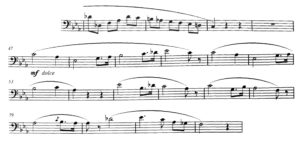
Example 27: Raph’s edition of etude #15, mm. 43-63. Note the long slur over mm. 47-50, and mm. 51-56, which do not appear in Rochut’s edition.
RH: I always wondered how that got left out of the Rochut edition because when I first got your new book I realized it makes perfect sense with those six bars added back in. It brings symmetry to the phrase.
AR: Sure, because it’s a repeated sequence.
RH: So do you have any idea how that got left out by Rochut?
AR: Yes! Rochut was tired one night. It happens. So those are some examples of the things I’ve fixed. I’ve talked enough!
RH: Not at all! It’s all great stuff. It’s really good to know that a lot of these changes have gone back to Bordogni’s original intention.
AR: A lot of them were. And the arbitrary ones like removing grace notes and extending phrases are things that just seem to make more sense. I did it from a trombone point of view.
RH: So a question for you about the layout of the book: I noticed that a lot of etudes have better page turns, but a lot of them still have bad page turns. Did you have anything to say about the layout or was it all dictated by Carl Fisher?
AR: That was a big thing with the editor. He wanted to get the page turns right. So tell me where it’s not right.
RH: Any of the ones that have the same etude on more than one page spread. Like Number 28 in the new book. Sure, there’s a half rest at the end of the page but the etude still has a page turn.
AR: No, you have two beats to turn the page so it’s fine.
RH: So you didn’t need every etude to be on the same spread as long as there’s time to turn the page?
AR: Yes. That’s what [the editor] tried to do. Play, turn, continue. It’s like playing in the orchestra. You make quick page turns all the time. We did have a little bit of a conflict, though, because he said, “can’t we change the order of these etudes so that I can give a better page turn?” And I said, “no, absolutely not!” Because people have been teaching out of this book for decades, and they don’t want to suddenly see Number 14 coming after Number 30. So we didn’t change the order, and he did the best he could with it. I told him if need be, space something out a little more so you get a couple beats of rest. And he did. He did a nice job on that.
RH: That makes total sense. Now what about the physical book? I noticed that in the old book it’s all stapled together and the cover would come off after a few years. It was always a badge of honor to wear the cover off your Bordogni book! This new book has a new binding. Is that the way they do all their books now or did you tell them specifically to make it more durable?
AR: No, I had nothing to do with that. Larry Clark is the editor in chief, and he told me that they have a new binding. It makes it easier to keep the book open, it’ll turn pages easier, and it’ll last longer.
RH: Sure, I had noticed it was different so I’m interested in anything that was deliberate vs. things that were done merely as a default practice of the publisher. That’s all I had to ask about. If you have any final thoughts I’d be happy to get those.
AR: Well, I could go on forever! I’m serious about the trombone and about music. But I don’t want to take up your day either. So we can leave it for another time!
–
Ross Holcombe is the principal trombonist of the Spokane Symphony Orchestra. He also holds the position of 2nd/associate principal trombonist of the Vermont Symphony Orchestra in addition to his duties as instructor of trombone and low brass at Eastern Washington, Gonzaga, and Whitworth Universities. More information about Ross Holcombe can be found on his website at www.RossHolcombe.com.
